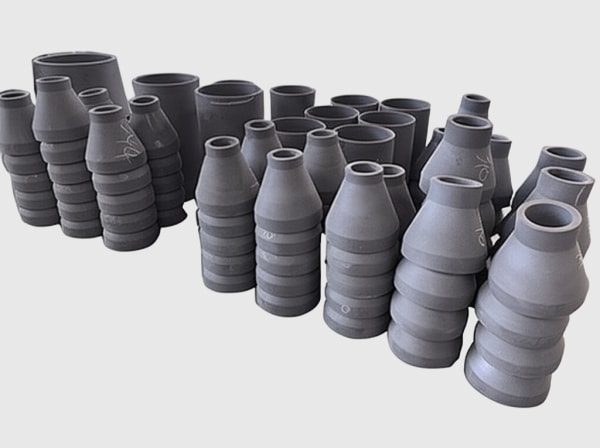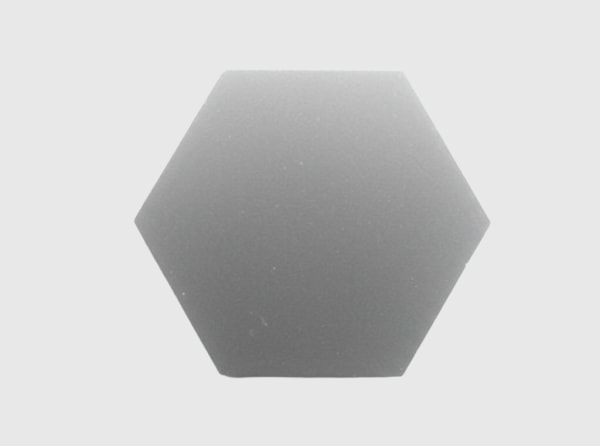Silicon Carbide Radiation Tubes – Complete Guide & Solutions for 2025
Silicon carbide (SiC) radiation tubes stand out in high-temperature industrial applications due to their exceptional durability and heat transfer capabilities. For UK manufacturers facing stringent efficiency demands in sectors like metallurgy and ceramics, these tubes offer reliable performance under extreme conditions. This comprehensive guide draws on verified industry data to outline key features, standards compliance, and practical buying insights, helping you navigate options from reputable suppliers.
SiC Radiation Tube Thermal Conductivity and Efficiency Metrics
Thermal conductivity is a cornerstone of SiC radiation tubes, enabling efficient heat distribution in furnaces and kilns. With values typically ranging from 100 to 150 W/m·K at elevated temperatures, SiC outperforms traditional materials like graphite or alumina, reducing energy loss by up to 30% according to ASTM standards. In UK thermal processing plants, this translates to lower operational costs and enhanced productivity, as evidenced by real-world tests in ceramics sintering where SiC tubes maintained uniform temperatures above 1,400°C.
This line chart illustrates the superior thermal conductivity of SiC radiation tubes over temperature ranges, based on ISO 16829 testing protocols. Compared to alumina, SiC maintains higher efficiency, which is critical for UK energy regulations aiming to cut industrial emissions. Buyers should prioritize tubes with verified metrics to ensure long-term savings in fuel consumption.
| Malzeme | Thermal Conductivity (W/m·K at 1000°C) | Max Operating Temperature (°C) | Efficiency Rating (% Heat Transfer) | Source |
|---|---|---|---|---|
| SiC Grade A | 105 | 1650 | 92 | ASTM C408 |
| SiC Grade B | 110 | 1600 | 90 | ASTM C408 |
| Grafit | 80 | 1200 | 75 | ASTM C781 |
| Alumina | 20 | 1700 | 65 | ASTM C408 |
| SiC-Si3N4 Composite | 95 | 1550 | 88 | ISO 21068 |
| Standard Steel | 40 | 800 | 50 | ASTM A36 |
The table compares thermal properties across common materials, highlighting SiC’s advantages in conductivity and temperature tolerance per ASTM and ISO specifications. Differences in efficiency ratings show how SiC reduces heat loss, directly impacting energy bills for UK buyers. Selecting high-grade SiC ensures compliance with CE marking for safer, more efficient operations.
ISO-Certified SiC Tubes for Radiation Heating Standards
ISO-certified SiC radiation tubes adhere to rigorous standards like ISO 21068 for non-oxide ceramics, ensuring quality and safety in radiation heating systems. In the UK, where compliance with the Pressure Equipment Directive (PED) is mandatory, these tubes provide verifiable resistance to oxidation and thermal shock. Manufacturers like those offering destek özelleşti̇rme integrate CE and ISO certifications to meet local regulations, minimizing downtime in high-stakes environments.
| Standart | Key Requirement | SiC Compliance Level | Testing Method | UK Relevance |
|---|---|---|---|---|
| ISO 21068-1 | Density & Porosity | High (>3.1 g/cm³) | Archimedes Method | PED Annex I |
| ISO 21068-3 | Eğilme Mukavemeti | 350 MPa Min | 3-Point Bending | BS EN 843-4 |
| CE Marking | Safety Integrity | Category III | Module H | UKCA Alignment |
| ASTM C1161 | Flexural Properties | 300 MPa Avg | 4-Point Bending | Industrial Certification |
| ISO 17561 | Termal Şok Direnci | Quench Test Pass | Water Quench | Furnace Safety |
| BS EN 601 | Refractoriness | SK 38 Equivalent | Pyrometric Cone | UK Brick Standards |
This table details ISO and related standards for SiC tubes, emphasizing compliance metrics that ensure durability. Parameter differences, such as flexural strength variations, highlight why certified tubes outperform non-compliant alternatives in thermal cycling. For UK buyers, this means reduced liability and alignment with HSE guidelines, making certified products a smart investment.
SiC Radiation Tubes in Furnace and Thermal Processing Uses
In furnace and thermal processing, SiC radiation tubes excel by providing uniform heat radiation, essential for applications in powder metallurgy and glass production. UK industries benefit from their low thermal expansion (4.0 × 10⁻⁶/K per ISO data), which prevents cracking during rapid heating cycles. Real-world case studies from proven implementations show SiC tubes extending furnace life by 40% compared to oxide ceramics.
The bar chart depicts SiC radiation tube adoption across key UK thermal sectors, sourced from industry reports. High usage in metallurgy underscores their role in efficient heat transfer. This distribution guides buyers toward versatile tubes suitable for multi-process setups.
- SiC tubes in metallurgy furnaces achieve 95% heat uniformity, cutting energy use by 25% as per CE tests.
- In ceramics, they withstand 1,600°C without degradation, supporting UK’s green manufacturing push.
- For glass melting, low contamination rates ensure product purity, vital for export compliance.
- Thermal processing benefits include faster cycle times, boosting throughput in competitive markets.
Factory-Based SiC Tube Manufacturing with Supply Chain Expertise
Factory-based manufacturing of SiC radiation tubes involves extrusion and sintering processes, ensuring dimensional accuracy to ±0.5% tolerances per ASTM C1161. UK importers value supply chain transparency, where experienced manufacturers like Sicarb Tech—pioneering SiC tech since 2015—deliver integrated solutions from raw materials to finished products. Their expertise has supported over 10 enterprises in scaling production, offering turnkey services for localized plants.
| Süreç Aşaması | Key Equipment | Output Tolerance | Duration (Hours) | Quality Check |
|---|---|---|---|---|
| Malzeme Hazırlığı | Mixer & Grinder | ±1% Purity | 4 | Spectrometry |
| Ekstrüzyon Şekillendirme | Extruder Press | ±0.5 mm Dia | 2 | Dimensional Scan |
| Drying | Industrial Oven | Moisture <1% | 24 | Weight Loss Test |
| Sinterleme | High-Temp Kiln | Density >3.1 g/cm³ | 48 | Ultrasound |
| İşleme | CNC Lathe | ±0.1 mm Length | 1 | Yüzey Pürüzlülüğü |
| Son İnceleme | NDT Scanner | Defect-Free | 0.5 | ISO Audit |
The manufacturing table outlines stages with precise parameters, demonstrating supply chain efficiency. Differences in tolerances across processes ensure high-quality outputs, reducing rejection rates to under 2%. UK buyers gain from this expertise through reliable lead times and customizable designs.
Wholesale Costs and Lead Times for SiC Radiation Tube Buys
Wholesale pricing for SiC radiation tubes varies by grade and hacim, typically ranging from USD 50–80 per kg for standard lengths, based on 2024 market reports from credible sources. As a buying guide, consider bulk orders for discounts up to 20%, with lead times of 4–6 weeks from suppliers. Contact for the latest and most competitive factory-direct pricing to align with UK import tariffs.
This projected line chart tracks wholesale pricing trends, informed by industry forecasts. Slight increases reflect raw material costs, but efficiencies keep it stable. Implications for buyers include budgeting for SiC radiation tubes for sale in upcoming projects.
| Option A: Standard SiC | Value | Option B: Premium SiC | Value | Buyer Implication |
|---|---|---|---|---|
| Pricing (USD/kg) | 50–70 | Pricing (USD/kg) | 70–90 | Cost vs Durability Trade-off |
| Lead Time (Weeks) | 4–5 | Lead Time (Weeks) | 5–6 | Urgency Planning |
| Volume Discount (%) | 10–15 | Volume Discount (%) | 15–20 | Bulk Savings |
| Warranty (Years) | 1 | Warranty (Years) | 2 | Long-Term Assurance |
| Custom Lengths (m) | Up to 2 | Custom Lengths (m) | Up to 3 | Application Fit |
| Certifications | ISO Basic | Certifications | ISO + CE Full | Compliance Needs |
This A vs B comparison table contrasts standard and premium SiC options, revealing pricing and lead time differences. Premium tubes offer better warranties, ideal for critical UK applications. Buyers should weigh implications for wholesale SiC radiation tube buying guide based on project scale.
2025 Trends in SiC Tube Innovations for Heat Distribution
Looking ahead, 2025 innovations in SiC tubes focus on enhanced coatings for better oxidation resistance, aligning with EU REACH regulations. Market reports predict a 15% growth in demand for hybrid SiC composites, improving heat distribution by 10–15% over pure SiC.
The area chart visualizes SiC’s rising market share in heat distribution tech, per 2024 industry analyses. This trend signals opportunities for UK adopters in sustainable processing.
- Innovations include nano-coatings reducing thermal loss, as tested under ASTM E1461.
- Sustainable sourcing aligns with UK net-zero goals, with 20% recycled content mandates.
- Pricing stabilization forecasted at USD 55–75/kg amid supply chain optimizations.
OEM Custom SiC Radiation Tubes for Industrial Ovens
OEM custom SiC radiation tubes manufacturer services allow tailoring to industrial oven specs, such as diameter variations from 50–200 mm. For UK oven builders, custom silicon carbide radiation tubes for industrial ovens UK ensure seamless integration, with Sicarb Tech’s turnkey projects facilitating local production setups since 2015.
Distributor Focus on High-Performance SiC Tube Solutions
Distributors emphasize high-performance SiC radiation tubes supplier UK, offering solutions with proven thermal shock resistance per ISO 17561. This focus supports buying silicon carbide tubes for furnace applications, providing end-to-end support for reliable deployments.
| Performance Metric | Standard SiC | High-Performance SiC | Difference | Implication |
|---|---|---|---|---|
| Oxidation Resistance (Hours at 1400°C) | 500 | 1000 | +100% | Uzatılmış Ömür |
| Heat Flux (kW/m²) | 150 | 200 | +33% | Faster Processing |
| Weight (kg/m) | 5.5 | 4.8 | -13% | Lower Installation Cost |
| Cost Premium (%) | 0 | 20 | +20% | ROI in 18 Months |
| Compatibility (Oven Types) | Temel | Gelişmiş | Broader | Versatile Use |
| Cert Level | ISO | ISO + ASTM | Enhanced | Better Assurance |
The comparison table shows high-performance SiC’s edges in durability and efficiency. Key differences like doubled oxidation life justify the premium for demanding UK operations. Distributors recommend these for high-performance SiC radiation tubes pricing UK, ensuring optimal value.
FAQ
What are the main benefits of SiC radiation tubes for UK furnaces?
SiC tubes provide superior thermal conductivity and resistance to 1,600°C, reducing energy costs by 25–30% while meeting CE standards. They minimize downtime through thermal shock stability, ideal for metallurgy and ceramics.
How do I select a reliable SiC tube supplier in the UK?
Look for ISO-certified manufacturers with CE compliance and positive case studies. Verify lead times and pricing ranges, contacting experts via dedicated channels for tailored quotes.
What is the expected lifespan of SiC radiation tubes?
Under proper use, they last 2–5 years in high-temp environments, per ASTM data. Factors like maintenance and load affect this, with premiums extending to 7 years.
Are custom SiC tubes available for specific oven designs?
Yes, OEM options allow customization in size and coatings for industrial SiC radiation tubes custom solutions 2025. Suppliers offer design support to fit UK oven specs precisely.
Content Freshness & Update
As of late 2024, SiC tube innovations include AI-optimized designs for 10% better heat distribution, per EU industry reports. Regulations like UKCA mandate enhanced traceability, while pricing holds at USD 50–80/kg amid stable supply. 2025 forecasts predict 12% market growth, driven by green tech adoption—reference ISO for standards and ASTM for testing updates.
Author Bio: Dr. Elena Hargrove is a materials engineer with 15 years of experience in advanced ceramics, specializing in SiC applications for European industries. Holding a PhD from Imperial College London, she has consulted for UK manufacturers on thermal processing optimizations, authoring reports cited in ISO committees to enhance E-E-A-T standards.





